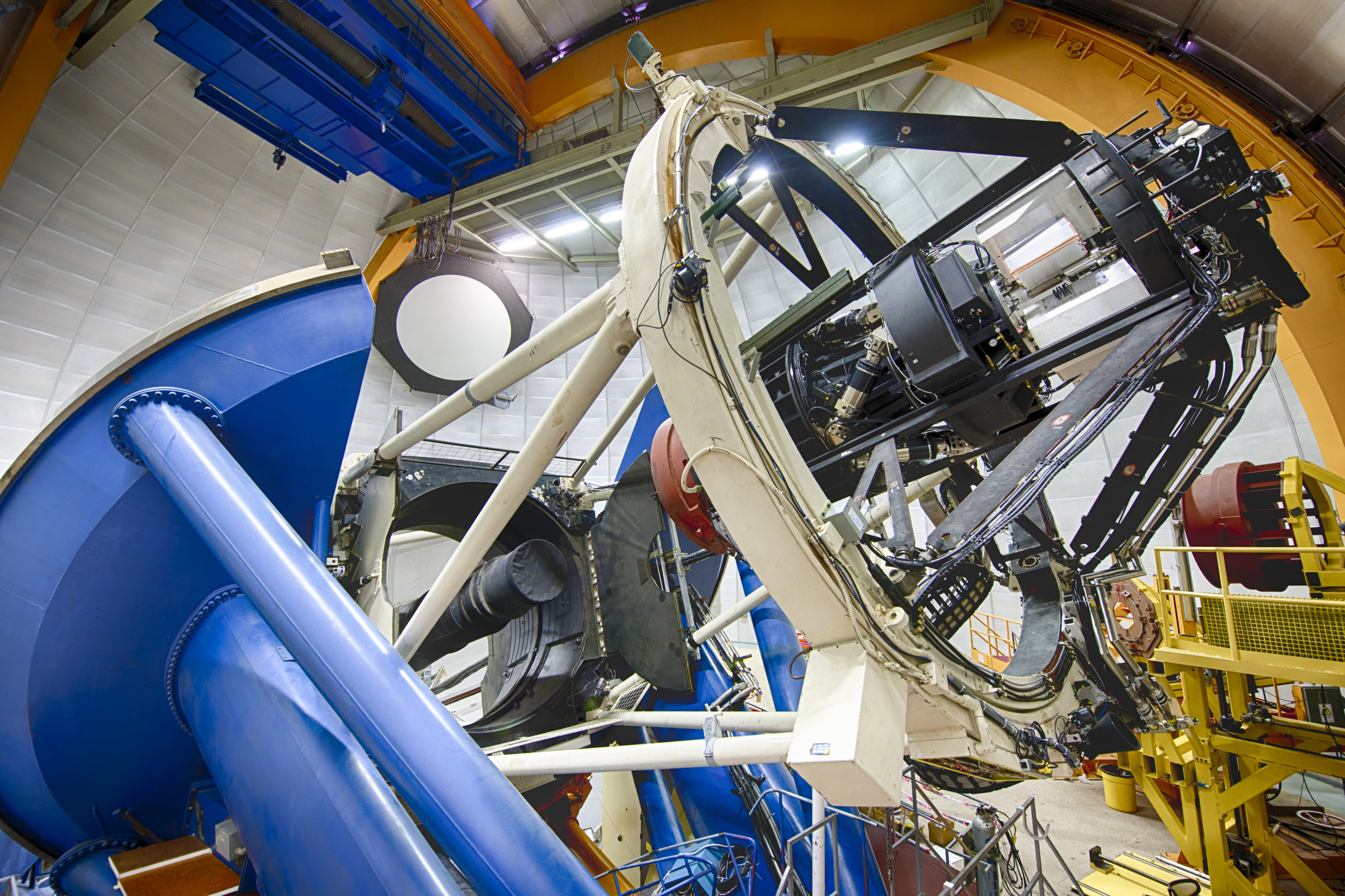
The Dark Energy Survey (DES) needs to observe hundreds of millions of galaxies to achieve its science goals. The state-of-the-art Dark Energy Camera (DECam) was designed and built from 2004 to 2010. Scientists at the Fermi National Accelerator Laboratory led the project, which was primarily funded by the U.S. Department of Energy, along with significant contribution from US universities, the United Kingdom, Spain, Brazil, Germany, and Switzerland. Just as DES is an international collaboration, DECam is an international camera with components built in five different countries.
The science requirements of DES drive the construction of the Dark Energy Camera (DECam). DES will look deeply into the universe, observing galaxies at great distances to record their motion and conditions in the distant past. To do this, DES needs a camera which will view relatively large areas of the sky at once while being sensitive to the redshifted light from these distant objects.
Everything about DECam is large-scale, including its field-of-view; about 14 copies of the moon would fit on the focal plane! The first and biggest of DECam’s lenses is nearly a meter (3.3 feet) across and weighs 176 kilograms (388 pounds), making it the largest optical corrector component currently used astronomy. The Dark Energy Survey records images using five filters, spanning 400 nm to 1080 nm. Each filter images the sky in a different color of light. With a 62 cm (24 inch) diameter, these too are the largest in use in the astronomical community. The images themselves are taken on a focal plane that is populated with 62 specially designed, state of the art CCDs, whereas ordinary digital cameras contain up to a few CCD. DECam can be read out in 20 seconds, faster than most CCD cameras currently in use in astronomy.
More:
https://www.darkenergysurvey.org/the-des-project/instrument/the-camera/
 = new reply since forum marked as read
= new reply since forum marked as read
